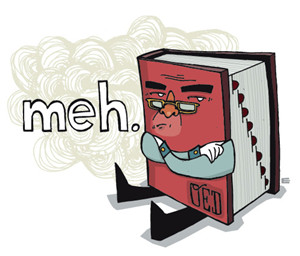
《词汇大师》今天讨论的是语言的多样性,根据美国现代语言学会MLA的研究,洛杉矶以南的广大区域是美国语言种类最多样的地区……
Broadcast on COAST TO COAST: August 19, 2004
A new map released by the Modern Language Association shows which languages are spoken where in the United States. According to the MLA map, a 33-square-kilometer area south of Los Angeles is one of the most linguistically diverse regions in the country. The communities there are home to speakers of everything from Navajo to Hmong. Though the variety provides cultural diversity, it can also create challenges for the residents. Alex Cohen filed this week's report for WORDMASTER:
ALEX COHEN: The city of Artesia (are-TEE-zhuh) is just 4 square kilometers, but nearly 40 languages are spoken within its borders.
SOUND: [Montage of prayers in Korean, Tagalog, Portuguese and Dutch]
At a recent prayer breakfast, blessings were offered in Korean, Tagalog, Chinese, Hindi, Hebrew, Spanish, Danish, Portuguese and Dutch.
Artesia Mayor Sally Flowers delivered the state of the city address at this breakfast in English, though she also speaks Spanish. She says she wanted the prayers to represent the many immigrant communities and reflect the cultural diversity in this city of 17,500 people.
SALLY FLOWERS: "Governor Gray Davis when he was in office had said that Los Angeles was the most diverse city in the world, and within LA County, Artesia is one of the most diverse cities."
Just down the road from the prayer breakfast is Seoul Soon-dae, a Korean restaurant that specializes in beef bone and knuckle soup. Owner Annie Kahng says in order to communicate with her Hispanic employees and a wide range of customers, she's picked up several languages over the years.
ANNIE KAHNG: "I speak mostly Korean and second English and I speak a little bit of Spanish and a little bit just Chinese and Japanese, just greeting. [laughs]"
Speaking several languages is pretty much par for the course in this area. According to the U.S. Census bureau, of the 40 most common languages spoken in this country, 39 of them can be heard in Artesia and neighboring cities like Cerritos and Bellflower.
Annie Kahng says she once moved to a city about an hour away, but quickly got homesick.
ANNIE KAHNG: "I didn't like it there. There aren't many places to go, as far as food goes. So I lived there about half a year and then I moved back here again."
Not far from Ms. Kahng's restaurant is Sona Chaandi, a clothing store and beauty salon where patrons can buy saris and gold jewelry and get Indian henna tattoos. Owner Mala Malani introduces herself in her two native tongues - Fijian and Hindi.
MALA MALANI: "Bula. Ni Samoday. And in Hindi, it's like Mira Nam Mala Hay."
Ms. Malani says she uses Hindi and English to communicate with most of her customers. But she's also hired staff from all over the world to accommodate the store's multicultural clientele.
MALA MALANI: "It's really good because the more the merrier, we do more business because all people comes here. That's why in my beauty salon I have Japanese, I have Chinese, I have Filipinos, so more people come. Because it's not just only for Indians, you know. We want everyone to come here."
Despite the multitude of languages heard throughout the area, English is still the primary language used to communicate.
TEACHER: "Everybody repeat, 'ah.'"
CLASS: "Ah."
TEACHER: "Again, 'ah.'"
Class: "Ah."
Jae Chun Oh is studying English as a second language at the local Adult School. During the 23 years he's spent in the United States, Mr. Oh has spoken mostly Korean. But lately, he says, he's realized the need to master English, even in an area as diverse as this.
JAE CHUN OH: "I want to expand my horizon in my career. Sometimes I need to contact someone outside of the Korean community, so I need the tool -- which is fluent English - to communicate."
Business isn't the only area where fluency in English is important. According to Juliet Stone with the Asian Pacific American Legal Center, non-English speakers face many challenges in their day to day activities.
JULIET STONE: "Things like going to the doctor and explaining what hurts. Going to get your driver's license, going to vote."
As Artesia's city manager, Maria Dadian (DAY-dee-in) understands these challenges well鈥?She says ideally, Artesia would provide documents like building permits, ballots for city elections and public notices in all of the many languages spoken in the city. But, she says, given Artesia's small staff and budget that's just not feasible.
MARIA DADIAN: "We have people who are of the Portuguese culture, people who are of the Cambodian culture, we also have Spanish speaking individuals here. Unfortunately, we can't cover every ethnicity that's out there."
But she acknowledges one advantage to being in such a small city: almost everyone in Artesia knows someone who speaks English. And so when the city is unable to provide services in a given language, officials can usually find someone within the community who can translate. For Wordmaster, I'm Alex Cohen in Los Angeles.











